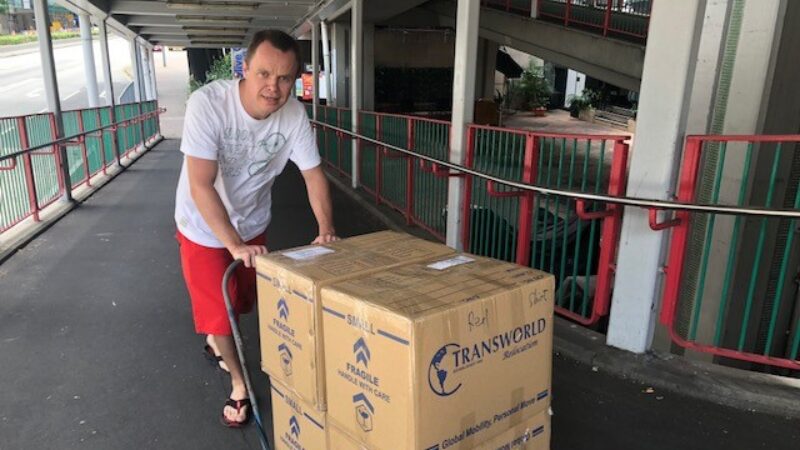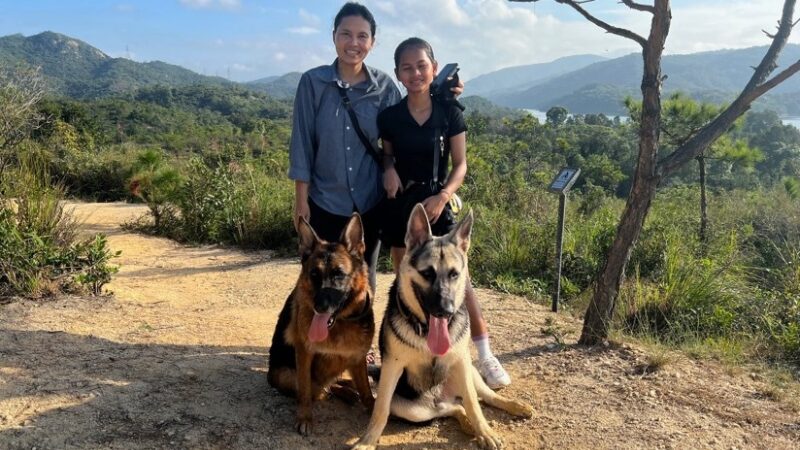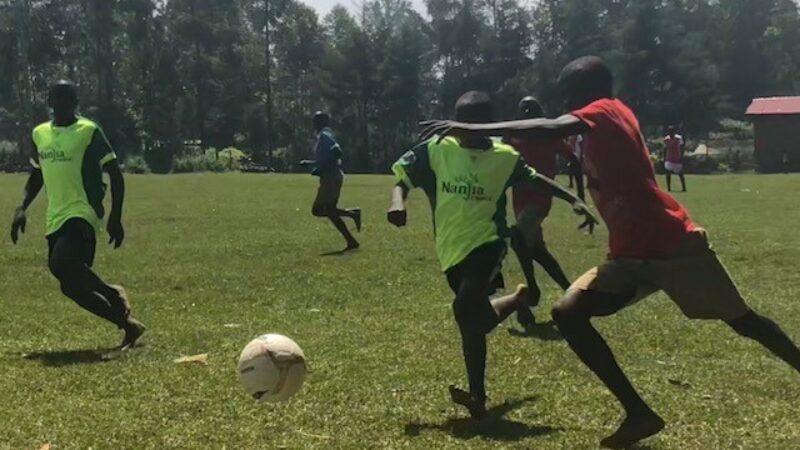Sam Coatham of Nanjia Capital on charitable giving
Sam Coatham is the Managing Director of Nanjia Capital in Hong Kong, an asset management boutique established in 2013. Like many other leaders in the alternative investment industry, Sam is passionate about giving back and helping those less fortunate. The Hedge Funds Club’s Stefan Nilsson decided to take a closer look at how charitable giving is best done.

How do you choose which good causes to get involved in? There certainly is no shortage of charities and other opportunities to get involved with.
There are many factors to consider when looking for the best charity partner for an organisation. We kept the following qualities in mind when choosing the charities which we support. Seeking to partner with charities is similar to investing in companies – we conduct real, boots-on-the-ground bottom-up due diligence. Transparency is a valuable quality for any company that’s looking to increase trust and loyalty. We look for organisations that share how they use their resources, provide insight into their budget-planning process and publicise the results of their efforts. We like charities which provide direct interaction with the people whom we sponsor through periodic outings and regular written messages and letters. The charities we choose have a focused, clear mission which is delivered in a concise manner. We carefully researched any affiliations the organisation may have and stances it has taken on major issues to gain an in-depth understanding of the charity were are planning to support. If the organisation is transparent, it is easy to find its mission statement and see how its major goals and objectives fulfil that vision and align with our views. A strong online presence not only projects a savvy, well-run charity but also increases the charity’s legitimacy and transparency. An informative website keeps us up to date on the latest projects, milestones and opportunities for giving. Where our charities host events, need volunteers or are fundraising for a specific initiative, a high-quality website will keep us tuned in and help make the most of our relationship. Some organisations have extremely informative websites with engaging content such as videos, stories, images and educational resources. There’s also access to various analyst platforms which undertake in-depth evaluations of complex charity financial reporting, including audited financial statements, tax forms, annual reports, state filings and other documents. Once the analysis is completed for a charity coupled with any required adjustments, calculations are then made on their efficiency rating, i.e. how much of the money donated goes towards the needs of the charity. Although we don’t fully rely on this, it’s a useful screening method. We view these documents in a similar manner to third-party analyst reports on the stocks where we invest. When making a financial commitment and publicly declaring our support for an organisation, we need assurance that the donations will make an impact and are utilised correctly. We checked various platforms, including social media, for comments about the charity, as well as press coverage and other media for potential red flags. We visited the charities thus gaining more tangible experience, seeing the charity in action inspired us to get involved. The process is similar to our criteria for seeking companies to invest in, we visit the management and work sites and observe first-hand the work undertaken in the community and witness the real benefits to society.
Generally speaking, are charities and other worthy organisations active in the APAC region good at demonstrating their goals and needs? Or are they missing out on opportunities because people who have the means to help are not always aware?
Generally speaking, western countries (which include the USA, Canada, Ireland and the UK) are the most generous donors to charities globally compared to the Asia Pacific. However, an exception to the norm is Myanmar. The high population of Theravada Buddhists within Myanmar for whom small, frequent acts of giving are the norm. This generosity helped earn Myanmar the number one spot during the data years 2013-2016 when more than 90% of the country’s residents donated money to charitable causes. Unfortunately, wealthy Asia-Pacific countries including China, Singapore, Korea and Japan languish in the lower areas of donations globally. In Hong Kong, at a recent charity event for the Cambodia Children’s Fund (CCF) which Nanjia Capital sponsored, HK raised over HK$3m during the evening event, which was amazing. Disappointingly though when speaking with the CCF team they mentioned some individuals who pledged to donate money on the evening actually renounced their donation when it came to payment – I quite frankly find this disgusting and will in future name and shame these guilty culprits. I believe charities in the region are vocal and transparent in demonstrating their goals and achievements, events are often fairly glitzy affairs which are supported by some of the hotels that house the events providing discounts and free rooms for the charity staff. Such support is an absolute credit as all participants can help these worthy causes.
Do you feel that people in the hedge fund and wider alternative investments industry in APAC are involved with charities and other volunteering opportunities or could they do more?
Internationally, hedge fund managers and staff are generally well engaged with charities in a multitude of different ways, from workplace giving programmes, to personal foundations set up by a manager or group of managers to donate a portion of their wealth, to board membership or trusteeship of established charities. Many of my “hedgie” friends, ex-employers and also my investors are heavily involved in charities. My ICAV/UCITS business markets to EU investors, ESG forms part of my investors’ due diligence but, unfortunately, many ASEAN markets where we trade provide little to zero ESG coverage. Therefore, both as a business and personally, we prefer to engage directly with charities that make a real difference in the local communities rather than wasting time and money on “greenwashing” initiatives just to tick the ESG box.

How do you look at just giving money versus deploying money and other resources such as your time?
Due to time constraints, we mostly give money, but where time permits, we help out and provide help. For example, we accommodated a teacher and a pupil from Cambodia while they stayed in Hong Kong. A relaxing time was enjoyed by all as we showed them our life in HK, enjoying simple things like walking the dogs in the backyard. There’s an element of my thinking though, that my time is best served ensuring my business is profitable and successful which then enables me to give back more to charities. We focus on what we do and allow the charity team to focus on their day job. In addition, we like to visit the children whom we sponsor which maintains our close relationships. Another area where we help though is the provision of English books for the Charity library. English books are super expensive in Asia Pac, so we buy direct from Oxfam in the UK, where my parents are volunteers, and bring them back to HK using Cathay Pacific’s generous luggage allowance. From HK we export to Cambodia, stocking up their library for the children to enjoy, helping out two charities in the process! Other areas include participating in charity fundraising events around the Asia Pacific region. For example, recently my business partner Simon Potter participated in the Angkor Half Marathon raising money for CCF. A solid effort from Simon as zero training was completed for the event!
Do you focus on one or a few causes or do you get involved in many different opportunities?
Again, due to time constraints, we focus our attention on one charity, but we do support others to a lesser extent. For example, visiting some of the positions we maintain in Kenya through our private debt strategy, we visited Senyende Primary School – a public primary school located in Shinyalu Constituency, Murhanda within the Kakamega District of the Western Province of Kenya. It is a day-only school for both boys and girls that caters for students within the local rural community. For the visit, we bought valued school apparatus and sports equipment to assist the development of local community schooling and encourage extracurricular activities and also kitted out the school’s football team in Nanjia Capital shirts and shorts. The school hosted a football match in our honour with another local team – this was very special and Team Nanjia won! It was very satisfying to combine on-site due diligence on the micro-lending projects we conduct in Africa coupled with supporting the local communities, but most importantly having fun in the process.

Tell us about your favourite good cause, how your involvement started and how you are involved.
Our favourite charity is Cambodia Children’s Fund (CCF) – as they provide a unique opportunity to directly sponsor children and build long-term relationships. The relationship between a CCF child and their sponsor is very personal and unique, evolving over time with emails and video calls. Writing to each other is just brilliant, you are so involved. It’s not just a bit of money going out of your account each month as you have a personal involvement. My daughter also writes to them. I first visited Cambodia in early 2000, witnessing first-hand children begging and scavenging in ankle-deep trash at the sprawling landfill in Phnom Penh. In a haze of toxic fumes and burning waste, thousands of children and adults rummaged through the garbage dump for scraps they could sell for money earning 4,000 riel ($1) a day – if they were lucky. The close relationship we have with our two sponsored children is like having a second family where we share a part in shaping and supporting their future lives.
Homepage | Cambodian Children’s Fund (cambodianchildrensfund.org)









